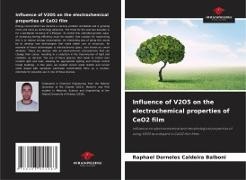Ulteriori informazioni
Energy consumption has become a serious problem worldwide and is growing more and more as technology advances. The trend for the next two decades is for a worldwide increase of 2.6%/year. To control this unbridled growth, ways of increasing energy efficiency must be studied. One solution for maximising this is to reduce energy consumption. An interesting way of doing this would be to develop new technologies that make better use of resources. An example of these technologies is electrochromic glass, also known as smart windows. These are devices with an electrochromic characteristic that can change their colour, resulting in a reduction in the transmission of light and radiation, as desired. The use of these glasses then leads to control over incident light and heat, allowing for appropriate lighting and climate control inside buildings. In this work, we studied cerium oxide (CeO2) and cerium oxide doped with vanadium pentoxide (CeO2:V2O5) films as a counter-electrode for possible use in one of these devices.
Info autore
Laureato in Ingegneria chimica presso l'Università federale di Rio Grande (2011). Studente di master e dottorato in Scienza e Ingegneria dei Materiali presso l'Università Federale di Pelotas (2016).

